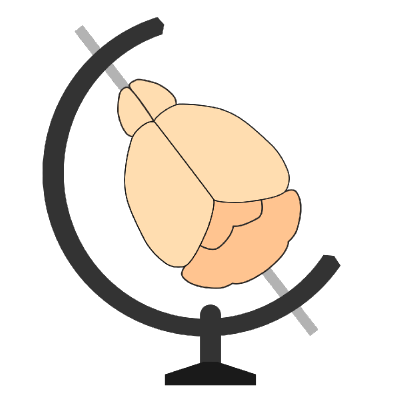Output files#
When you run brainmapper, depending on the options chosen, a number of files will be created.
These may be useful for custom analyses (i.e. analysis not currently performed by brainmapper itself).
The file descriptions are ordered by the subdirectory that they are found in, within the main brainmapper output directory.
Analysis#
summary.csv- This file lists, for each brain area, the number of cells detected, the volume of the brain area, and the density of cells (in cells per cubic millimetre).all_points.csv- This file lists every detected cell, and it’s coordinate in both the raw data and atlas spaces, along with the brain structure it is found in.
Figures#
heatmap.tiff- This is a heatmap (in the coordinate space of the downsampled, reoriented data) representing cell densities across the brain.
Points#
cells.xml- Cell candidate positions in the coordinate space of the raw datacell_classification.xml- Same ascells.xml, but after classification (i.e., each cell candidate has a cell/no_cell label)downsampled.points- Detected cell coordinates, in the coordinate space of the raw data, but downsampled and reoriented to match the atlas (but not yet warped to the atlas). This can be loaded withpandas.read_hdf()atlas.points- As above, but warped to the atlas. This can be loaded withpandas.read_hdf()points.npy- Cell coordinates, transformed into atlas space, for visualisation using brainrender
Registration#
The registration directory is simply a brainreg output directory.
To understand these files, please see the brainreg output files page.
Two other files are also saved, brainmapper.json and brainglobe_workflows_DATE_TIME.log.
These files contain information about how brainmapper was run, and are useful for troubleshooting and debugging.
If you ask for help (e.g. on the image.sc. forum), we may ask you to send the log file.
